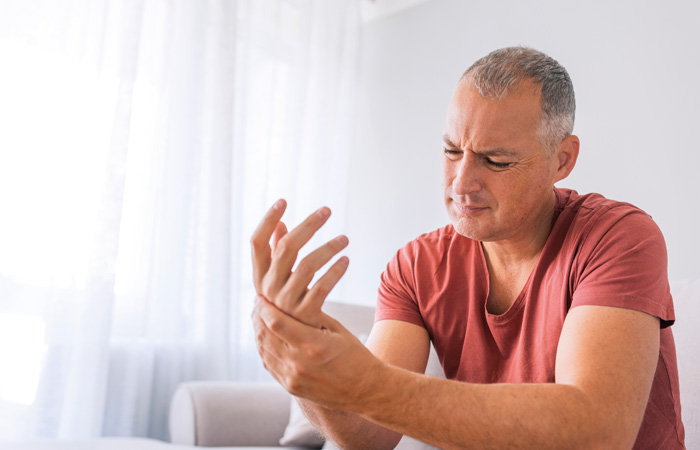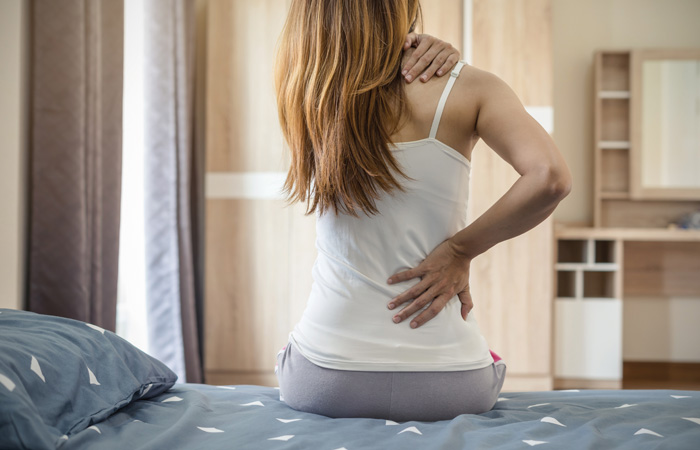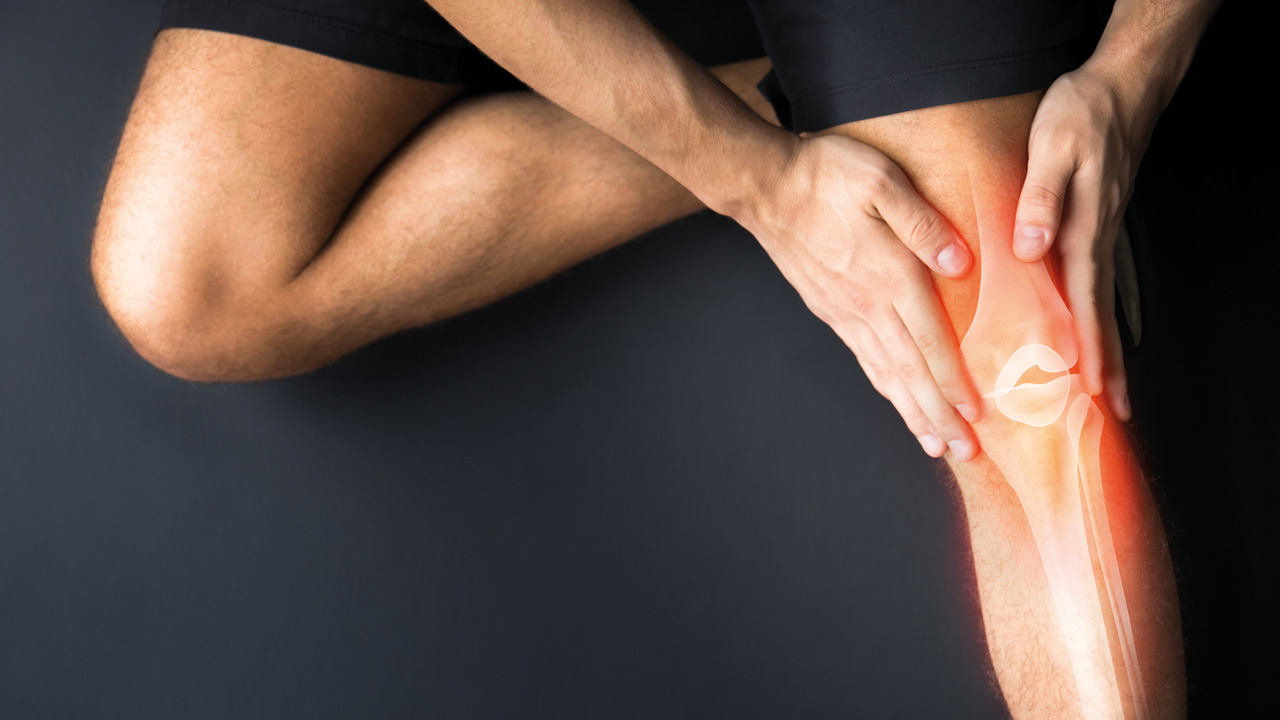In OTC
Follow this topic
Bookmark
Record learning outcomes
The nation is living longer, but in order to enjoy those extra years mobile and pain free, protecting joint and musculoskeletal health is key and pharmacy can be on hand to help
In the UK some 17 million people have a joint or musculoskeletal problem, according to the Joint Health of the Nation 2019 report commissioned by G.R. Lane Health Products. This far outweighs the number of people who suffer from dementia, cancer, diabetes and heart disease, and if the current rate continues, the number will be over three times the incidence of cancer alone by 2030.
There is a general lack of understanding about the extent of the impact musculoskeletal conditions have on people’s lives and the report points out that a greater focus needs to be placed on self-management and the importance of maintaining good joint health.
This will allow people with these conditions to enjoy a better quality of life and will also limit the wider impact of these conditions on the healthcare system and society as a whole. Over 30 million working days are lost each year due to joint and musculoskeletal problems and joint conditions account for a fifth of GP visits. In addition, more people under 60 are having hip replacement surgery due to chronic pain than ever before.
At the first sign of joint pain, many people immediately opt for analgesics, with paracetamol still being the most common first-line treatment. However, Dr Rod Hughes, consultant rheumatologist at Ashford St Peter’s Hospital, says: “As a nation we tend to ignore our joints until they cause us problems, resulting in an increasing number of people taking long-term analgesics to control the pain or needing surgery to repair knees and hips. Pharmacists can play a pivotal role in steering people with joint pain towards a prevention programme, promoting lifestyle and diet changes, including recommendation of clinically-proven joint specific supplements.”
The five STEPS
The Joint Health of the Nation 2019 report recommends five STEPS to help reduce the burden of joint and musculoskeletal problems:
- Self-management – consider lifestyle changes, diet, exercise and clinically-proven supplements to protect joint health
- Tailored prevention programmes – provide personalised approach to improve outcomes
- Earlier intervention – seek prompt advice to treat joint pain
- Psychological support – ensure holistic approach to alleviate impact on mental health
- Speed up referrals and access to treatment – quicker treatment to improve patient outcomes and prevent comorbidities and frailty.
The importance of exercise
Regular exercise helps strengthen muscles around affected joints to improve mobility and weight loss, if needed, can make a big difference in reducing strain on affected joints. Low-impact exercise is recommended for people with all types of arthritis, these include swimming, cycling and walking, although it’s important for the customer to pick a form of exercise that they enjoy so that they stay motivated.
Jillian Watt, director of marketing and new product development (NPD) at the Mentholatum Company, says: “If someone who has joint pain has got out of the habit of exercise, it is likely they will be less willing to start moving because they fear movement will increase the pain. In fact, movement can help reduce pain and increase range of motion by encouraging the circulation of synovial fluid in the joints, increasing blood flow to deliver oxygen and nutrients to joints and muscles.”
Pharmacy teams can recommend people with joint pain start gently and gradually increase exercise time, working up from five to 10 minutes a day to 30 minutes. If joints are aching and sore an hour after exercising, the customer should be advised to reduce this.
Regular exercise helps strengthen muscles around affected joints to improve mobility
Osteoarthritis: the facts

Osteoarthritis is the most common chronic condition of the joints, affecting eight million people in the UK, and cases are set to increase due to the ageing population, rising obesity and poor fitness levels.
The condition is characterised by inflammation of the joints and causes pain and stiffness due to the joint cartilage becoming damaged and worn. Some 57 per cent of people with arthritis report they experience pain every day and one in eight people with osteoarthritis describe their pain as often unbearable. This highlights a widespread need for support and advice in managing the condition.
Obesity is both a cause and an exacerbating factor in osteoarthritis. People who are overweight or obese are five times more likely to develop knee arthritis, it is estimated that every pound of excess weight exerts four pounds of extra pressure on the knees.
Sprains and strains
With most forms of exercise comes the risk of injury if someone is unprepared or pushes themselves too hard, with the most common being sprains and strains.
A sprain is an injury to the ligament, usually caused by the joint being forced beyond its normal range of movement. With a severe sprain, it can often be hard to tell whether it’s a fracture or a sprain. These are most common in the wrists, ankles, thumbs and knees.
A strain is an overstretching and tearing of muscles or tendons and these are most common in the knees, feet, legs and back. Symptoms include inflammation, swelling and bruising around the joint and movement can be painful, although this depends on its severity.
“When it comes to sprains and strains, speed is of the essence, says Jillian. “Stress the value of having a cold therapy in the medicine cabinet or sports bag so cooling can start immediately.”
Initial treatment is about following PRICE and avoiding HARM. These are advised for the first 48-72 hours and can be combined with analgesia, if necessary.
- Protect joint and/or muscle from further injury with a support
- Rest the joint and/or muscle for 48-72 hours
- Ice or cold therapy should be applied immediately for 15-20 minutes and then again every two to three hours during daytime
- Compression with a bandage to limit swelling. Keep on for 48 hours, but remove at night
- Elevation helps reduce swelling.
Avoid HARM for 72 hours:
- Heat can increase bruising and inflammation, avoid hot baths, saunas and heat packs
- Alcohol can increase bleeding and swelling
- Running and other activities that use the affected part
- Massage may increase bleeding and swelling.
One in eight people with osteoarthritis describe their pain as often unbearable
Chronic pain and mental health
There are strong links between chronic pain and poor mental health. A study of patients attending a chronic pain clinic found that 60 per cent had depression and 33 per cent of those were severely depressed. It’s estimated that persistent pain affects a third to half of the population and almost half have a diagnosis of depression, with two-thirds unable to work outside the home, according to NICE.
In addition, a recent survey by joint supplement brand GOPO, found that for 62 per cent of respondents, joint pain made it hard for them to walk, a quarter said it affected their socialising and ability to work and nearly half of the respondents had difficulty even getting in and out of a car, which can lead to loneliness, isolation and depression.
Arthritis Care has the following tips to pass on to customers struggling with chronic pain and mental ill health:
- Keep up with enjoyed activities or start a new one
- Stay connected to friends, family and community
- Keep active and exercise when possible
- Do some voluntary work when possible
- Take up a relaxation therapy.
Pain relief
- Oral analgesics
There are three main types of oral analgesic:
Paracetamol is useful for relieving mild-to-moderate pain and reducing fever, but doesn’t reduce inflammation.
Non-steroidal anti-inflammatory drugs (NSAIDs) include ibuprofen, diclofenac and naproxen. These work by lowering pain perception and reducing inflammation and are therefore useful for joint or back pain. However, they are not suitable for everyone as they can cause gastric bleeding in some people.
Opioids available over the counter include codeine and dihydrocodeine. These are used for more severe pain, such as after a severe injury or after surgery, but should only be used for short periods as they can cause dependency if taken long term.
- Topical analgesics
These are used to ease muscle pain, sprains and strains. They are also useful for arthritis pain and the advantage is they have fewer side effects than oral NSAIDs.
Topical NSAIDs include ibuprofen and diclofenac. They are available as gel, gel patch, spray or foam. Topical NSAIDs work in the same way as oral NSAIDs, but only on the area applied to, so side effects are minimal. They can be used alongside heat and cold therapy to treat sprains and strains.
- Heat and cold therapy
Heat is an effective treatment for aches and pains. It causes blood vessels to dilate, which stimulates tissue healing, soothing pain and easing stiffness.
Heat should not be used on a new injury, unless it is a low-back strain, where it can be useful. It can be used on aching muscles, easing cramps and period pain. Jillian says: “Recommend it for nagging back pain, stiff, aching muscles and before exercise to help warm up muscles.”
Cold therapy is good for treating soft tissue injuries. “It should be recommended as first treatment following a sprain or strain; for sharp, shooting pain; and muscular back pain in pregnancy,” says Jillian. Cold therapy can help ease pain immediately after an injury. It can also help prevent tissue swelling if used quickly. Ideally it should be used within 10 minutes of injury and for 20-30 minutes. It can be repeated every two to three hours and for up to 48 hours in total.
Most people will experience back pain at some time in their lives and in most cases it gets better in a few weeks, says the Chartered Society of Physiotherapists.
Jillian Watt, director of marketing and new product development (NPD) at the Mentholatum Company, says: “First, it is important to get more detail about the pain – did it come on suddenly; is it an ongoing problem; how is it affecting the patient’s normal daily life; and is the pain moderate or severe, dull or sharp, constant or intermittent? Once you have that information it helps to frame the advice you offer.”
Some people will experience repeat episodes of pain, but even this is rarely serious and in most cases, a cause is not found. Common factors include: a sprain, psychological causes such as stress and depression, being overweight, not being active. Less common, but more serious causes include arthritis, a slipped disc, osteoporosis or a fracture.
Managing back pain

Most people will experience back pain at some time in their lives and in most cases it gets better in a few weeks, says the Chartered Society of Physiotherapists.
Jillian Watt, director of marketing and new product development (NPD) at the Mentholatum Company, says: “First, it is important to get more detail about the pain – did it come on suddenly; is it an ongoing problem; how is it affecting the patient’s normal daily life; and is the pain moderate or severe, dull or sharp, constant or intermittent? Once you have that information it helps to frame the advice you offer.”
Some people will experience repeat episodes of pain, but even this is rarely serious and in most cases, a cause is not found. Common factors include: a sprain, psychological causes such as stress and depression, being overweight, not being active. Less common, but more serious causes include arthritis, a slipped disc, osteoporosis or a fracture.
Self care tips
There are several self care tips that can be passed on to customers suffering from back pain:
- In the first few days avoid aggravating activities
- Stay as active as possible and return to usual activities gradually
- Stay in work where possible
- Don’t avoid bending or lifting, but do these in a safe way
- Exercise will reduce and prevent back pain
- Start exercise slowing and build up gradually
- Lift heavy objects carefully, bending knees and hips, never the back
- Maintain good posture
- Take a break from sitting every 30 minutes
- Find relaxation techniques to manage stress
- Mentholatum’s national MindYourBack campaign provides further advice to pass on to customers to help manage and prevent back pain.

